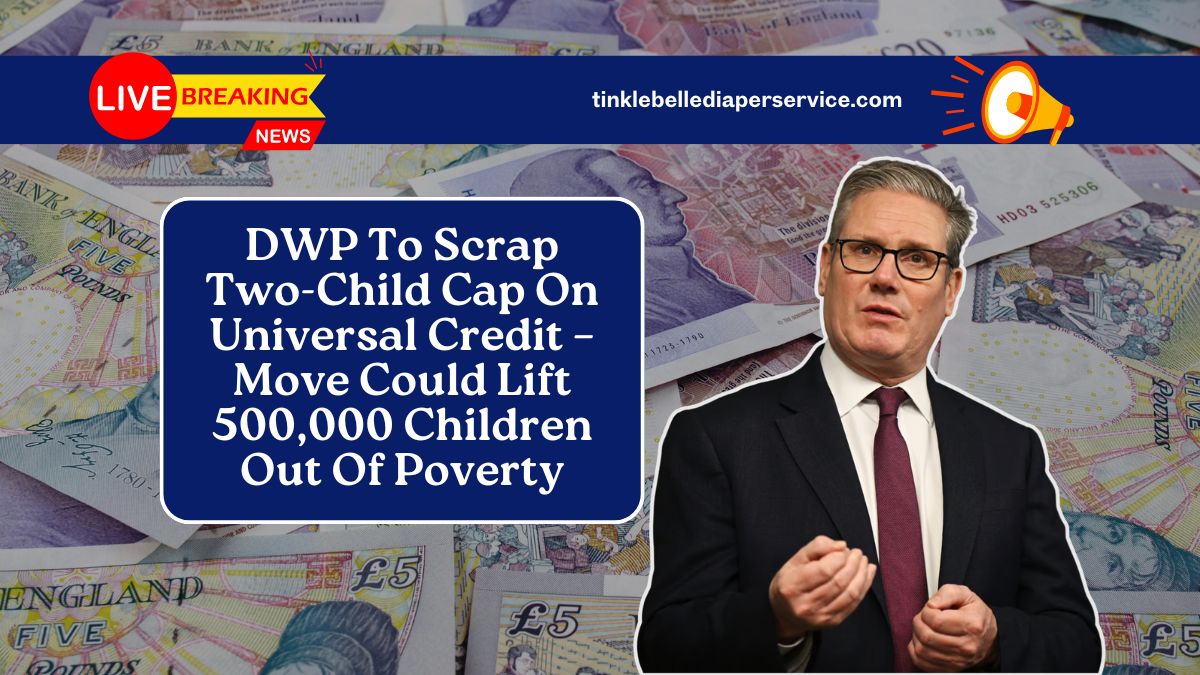In a major policy shift that could reshape the UK’s welfare landscape, the Department for Work and Pensions (DWP) is reportedly preparing to scrap the two-child cap on Universal Credit payments.
This move is expected to bring substantial relief to hundreds of thousands of low-income families and has the potential to lift over 500,000 children out of poverty almost immediately.
What Is the Two-Child Benefit Cap?
Introduced in April 2017, the two-child limit restricts child-related support under Universal Credit and Child Tax Credit to a family’s first two children. Any third or subsequent child born after this date does not receive additional benefit support, regardless of a family’s financial need.
This policy has disproportionately affected larger families, many of whom are already experiencing financial hardship.
Critics have long argued that it breaks the fundamental link between household need and entitlement, pushing more children below the poverty line.
Why Is the Cap Being Scrapped?
The decision to remove the cap comes amid increasing concern over the UK’s rising child poverty rate, especially among larger households. Estimates show that more than a third of all children could be living in poverty by 2030 if no action is taken.
Removing the two-child limit is seen as one of the most cost-effective solutions for reducing child poverty and is expected to be a cornerstone of the government’s upcoming Child Poverty Strategy.
By eliminating this restriction, financial support can once again be equitably distributed based on the actual number of children in a household.
How Many Families Will Benefit?
According to recent data and economic modeling, scrapping the two-child cap will:
- Directly benefit 450,000+ families
- Lift approximately 500,000 children out of poverty
- Prevent millions more from slipping into poverty over the next five years
The estimated cost to the government of this policy reversal is around £3.5 billion by 2029–30, a figure deemed well-justified when weighed against its long-term social and economic benefits.
Policy Alternatives and Their Shortcomings
Several compromise options had been under discussion, including:
- Switching to a three-child limit
- Providing partial payments for additional children
- Exempting specific groups (e.g., children under five, disabled children, working families)
However, all these partial measures fall short when compared to full abolition. Here’s a comparative breakdown:
| Policy Option | Estimated Cost (£bn) | Children Lifted Out of Poverty | Gap vs Full Removal |
|---|---|---|---|
| Full Abolition | 3.5 | 500,000 | — |
| Exempt Children Under 5 | 1.6 | 195,000 | 305,000 |
| Exempt Working Families | 2.6 | 350,000 | 150,000 |
| Three-Child Limit | 2.4 | 280,000 | 220,000 |
| Exempt Disabled Children | 1.2 | 120,000 | 380,000 |
These alternatives, while cheaper, leave too many families behind and are considered inefficient in addressing long-term poverty.
Real-World Impact: A Family’s Perspective
Many families affected by the two-child rule have been forced to cut back on food, heating, and school expenses. Parents often resort to debt just to cover the basics. Removing the cap would allow families to:
- Reclaim financial stability
- Provide equal opportunities to all their children
- Plan for the future without constant financial strain
Scrapping the two-child cap on Universal Credit is a transformative move that brings hope to hundreds of thousands of families struggling under outdated benefit restrictions.
It re-establishes the core principle of providing support based on actual need and ensures that every child has access to the resources they deserve.
With the potential to cut child poverty rates significantly, this policy change marks a meaningful step forward in the fight against inequality. Families are advised to keep their benefit information current to ensure seamless transition once the new payment rules are in effect.
FAQs
What is changing with Universal Credit?
The two-child benefit cap, which limits financial support to only the first two children in a family, is being scrapped. Eligible families will now receive additional support for all children.
When will the change take effect?
While the official date is not yet announced, the change is expected to be part of the upcoming Child Poverty Strategy and could be implemented within the current parliamentary term.
Will families need to reapply to receive benefits for their third child?
No. Once the cap is removed, eligible families will automatically receive payments for all qualifying children without the need for a new application—provided their information is up to date.
